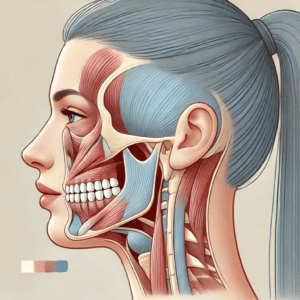Toasted Skin Syndrome: Causes, Symptoms, and Prevention
Table of Contents

Toasted Skin Syndrome: Causes, Symptoms, and Prevention
Introduction
Have you ever noticed a patchy, reddish discoloration on your skin after prolonged exposure to heat? This condition, known as toasted skin syndrome (medically called erythema ab igne), occurs due to repeated or long-term exposure to heat sources, such as laptops, heating pads, or space heaters. Although the condition is typically harmless, it can sometimes lead to long-term skin damage or signal underlying health risks. This article explores the causes, symptoms, prevention, and treatment options for toasted skin syndrome.
What Is Toasted Skin Syndrome?
Toasted skin syndrome, or erythema ab igne, is a hyperpigmentation condition that develops after prolonged exposure to infrared heat without causing burns. The condition typically appears as reticulated (net-like) red or brown patches on the skin.
Common Heat Sources that Cause Toasted Skin Syndrome:
- Laptops placed on the thighs for extended periods
- Heating pads or electric blankets used repeatedly
- Space heaters or fireplaces positioned too close to the skin
- Hot water bottles applied directly to the skin
- Radiant heat from prolonged sun exposure
The condition often occurs on the thighs, abdomen, and lower legs, depending on the heat source’s contact point.
What Are the Symptoms of Toasted Skin Syndrome?
1. Red or Pinkish Discoloration
- The affected area initially appears as reddish or pink blotches that may be warm to the touch.
- Over time, the redness can fade into a brownish, net-like pigmentation.
2. Mild Burning or Itching
- Some people experience discomfort, tingling, or mild burning sensations in the affected area.
3. Persistent Hyperpigmentation
- With continued exposure, the discoloration may become permanent or darker, leading to long-lasting marks.
- In rare cases, skin thickening or scaling may occur.
What Causes Toasted Skin Syndrome?
The underlying cause of toasted skin syndrome is chronic exposure to heat without direct burning of the skin. When the skin is exposed to prolonged heat, the blood vessels beneath the skin dilate, resulting in the characteristic redness. Over time, repeated exposure leads to pigment deposition and skin damage.
Common Risk Factors:
- Occupational hazards: Jobs involving long hours near heat sources, such as bakers or metalworkers
- Frequent use of heating pads for pain relief
- Prolonged use of laptops or electronic devices on bare skin
- Winter months: Increased use of indoor heating devices
Is Toasted Skin Syndrome Dangerous?
While toasted skin syndrome is generally considered a benign condition, it can have potential complications if left untreated:
- Persistent Hyperpigmentation: Prolonged exposure can cause long-lasting pigmentation changes, which may be difficult to reverse.
- Skin Cancer Risk: Though rare, chronic erythema ab igne has been associated with an increased risk of squamous cell carcinoma (SCC).
- Underlying Conditions: Persistent cases may be a symptom of underlying health issues, such as chronic inflammation or autoimmune diseases.
How to Treat and Manage Toasted Skin Syndrome
1. Discontinue Heat Exposure
The most important step in treating toasted skin syndrome is to remove or reduce exposure to the heat source. In many cases, the skin will heal naturally over time once the heat is eliminated.
2. Topical Creams and Ointments
- Moisturizers and emollients: Help soothe irritated skin and prevent dryness.
- Topical retinoids (e.g., tretinoin): Promote skin cell turnover, helping to fade hyperpigmentation.
- Corticosteroid creams: May be prescribed for inflammation and redness in severe cases.
3. Chemical Peels and Laser Therapy
For persistent discoloration, dermatologists may recommend chemical peels or laser treatments to reduce hyperpigmentation and improve skin texture.
4. Monitor for Signs of Skin Cancer
If you notice any changes, such as new lesions, thickened skin, or non-healing ulcers, seek medical attention immediately.
How to Prevent Toasted Skin Syndrome
1. Limit Heat Exposure
- Avoid prolonged use of heating pads or laptops directly on bare skin.
- Use a protective barrier (such as a pillow or laptop tray) to minimize heat contact.
2. Follow a Time-Limited Approach
- Limit your exposure to heat sources to 15-20 minutes per session and take breaks in between.
- Set timers as reminders to reposition or remove the heat source.
3. Protect Your Skin with Moisturizers
- Regularly apply moisturizing lotions to keep the skin hydrated and less prone to irritation.
4. Maintain Proper Distance from Heat Sources
- Ensure that space heaters or fireplaces are positioned at a safe distance to prevent prolonged direct contact.
When to See a Doctor
If you experience any of the following symptoms, consult a healthcare provider:
- Persistent skin discoloration that doesn’t improve after discontinuing heat exposure
- Development of new lesions, blisters, or ulcers
- Signs of skin thickening or scarring
Early diagnosis and treatment can help prevent complications, including skin cancer.
Conclusion
Toasted skin syndrome may seem harmless at first, but prolonged exposure to heat can lead to long-term skin damage or increase the risk of skin cancer. Understanding the causes and symptoms can help you prevent and manage the condition effectively. If you’re concerned about persistent discoloration, consult a dermatologist for personalized treatment options.
FAQs About Toasted Skin Syndrome
1. Can toasted skin syndrome be reversed?
In many cases, the discoloration improves or fades over time after stopping heat exposure. However, persistent cases may require dermatological treatments like chemical peels or laser therapy.
2. Is toasted skin syndrome permanent?
If left untreated, prolonged heat exposure can lead to permanent pigmentation changes. Early intervention can help minimize long-term damage.
3. Can laptops cause toasted skin syndrome?
Yes, placing a laptop directly on your thighs for extended periods is a common cause of toasted skin syndrome.
4. What is the connection between toasted skin syndrome and skin cancer?
Chronic cases of toasted skin syndrome have been linked to an increased risk of squamous cell carcinoma (SCC), though this is rare.
5. How can I protect myself from toasted skin syndrome?
Avoid direct heat exposure by using protective barriers, limiting exposure time, and maintaining a safe distance from heat sources.
External References
- American Academy of Dermatology – Information on skin conditions and treatments
- Cleveland Clinic: Skin Discoloration Causes – Causes and treatments for skin pigmentation
- DermNet NZ: Erythema ab igne – Medical reference on toasted skin syndrome













Post Comment